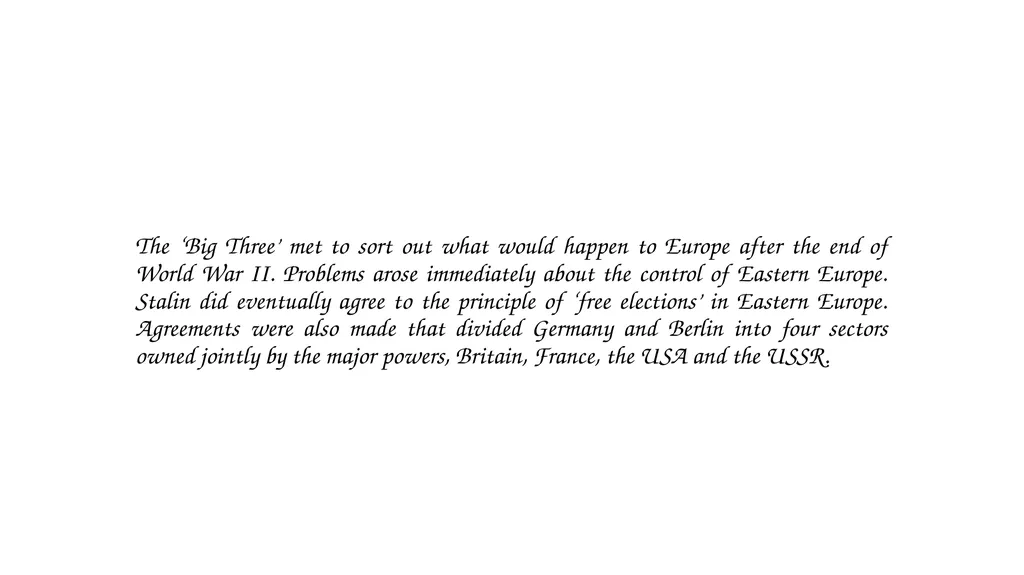
The ‘Big Three’ met to sort out what would happen
Author: kittie-lecroy | Published: 2025-08-04
Description: The Big Three met to sort out what would happen to Europe after the end of World War II. Problems arose immediately about the control of Eastern Europe. Stalin did eventually agree to the principle of free elections in Eastern Europe.
Download Presentation
Download the PPT/PDF: Download
Transcript:
Loading transcript�